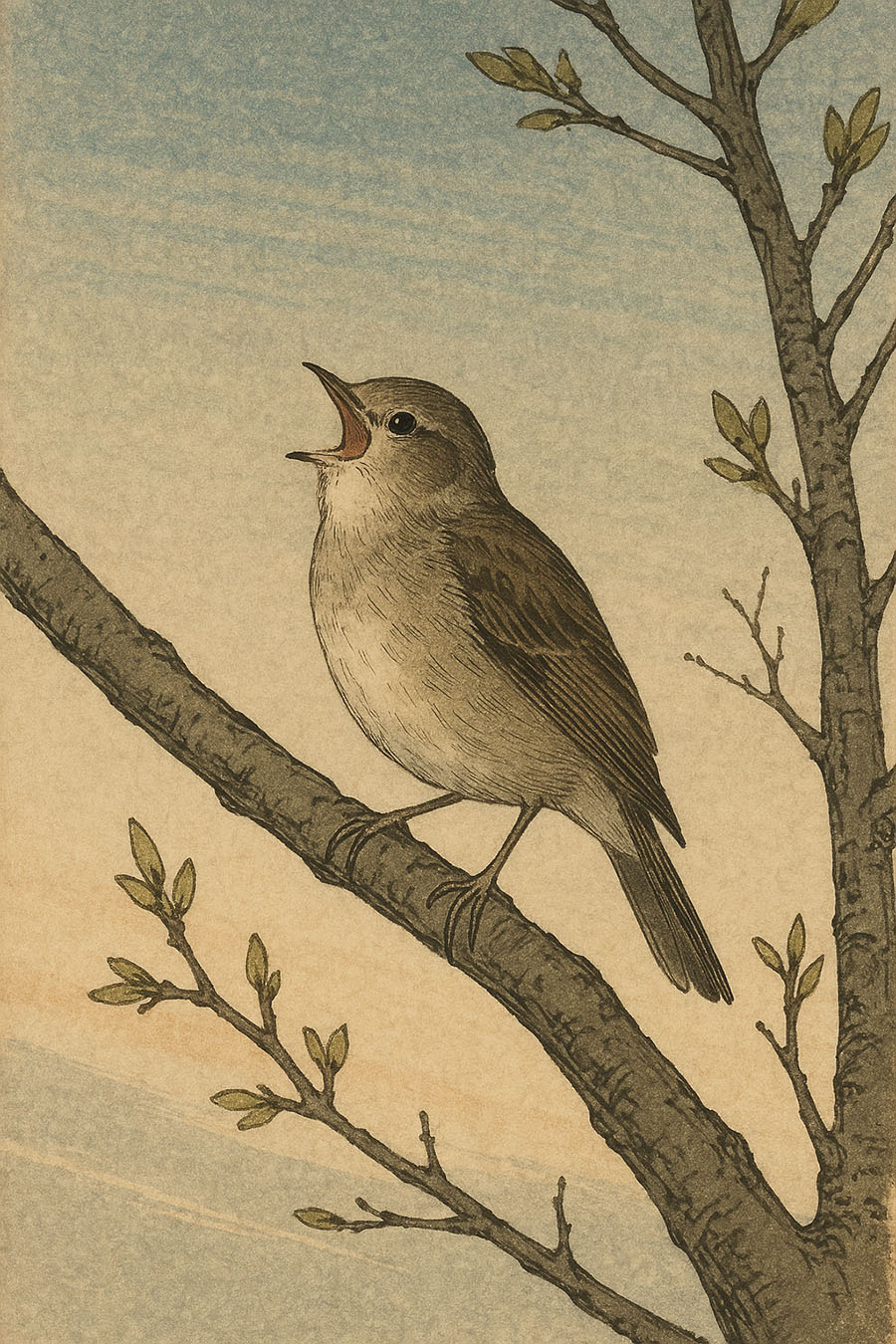The other day I happened to wake up about an hour earlier than my alarm clock. Usually when this happens, I just turn over and go back to sleep, but the other day, before I could do so, something outside my window caught my ear that not only made me stay up but also inspired a haiku.
早き朝聞き入れたりや鳥の声
hayaki asa kikiiretari ya tori no koe[1]
up early
listening to the birds
sing[2]

There’s something about birdsongs, isn’t there? They come across as pure joy, as a celebration of the beauty of the moment. I don’t know my bird calls very well, so I’m not sure what kind of bird was singing outside my window. It could have been sparrows. Sparrows seem to build nests under house eaves in spring fairly often around here, which is considered great luck. Whatever the case may be, I enjoyed the song enough that instead of going back to sleep when I heard it, I laid in bed listening and then composed this haiku.
I wrote it in English first and then translated it to Japanese, using more older and more poetic Japanese. The kigo (season word) is tori no koe, “voices of the birds”, which — as you might expect — is a kigo for spring.




